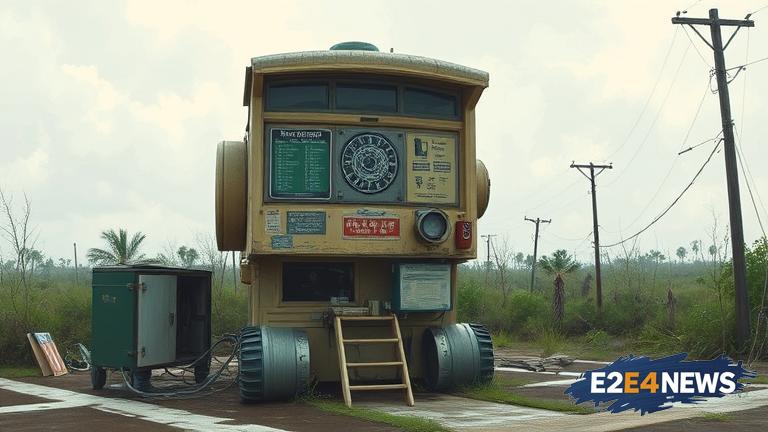It has been 20 years since Hurricane Katrina made landfall in the United States, causing widespread destruction and loss of life. The storm, which hit the Gulf Coast in August 2005, was one of the deadliest and costliest natural disasters in the country’s history. In the aftermath of the disaster, significant investments were made in hurricane forecasting and warning systems. These investments have paid off, with the National Hurricane Center (NHC) and other agencies developing highly accurate forecasting models that have saved countless lives. However, as the 20th anniversary of Katrina approaches, experts are warning against dismantling the hurricane forecasting machine that has been built over the past two decades. The NHC’s forecasting models, which use advanced computer simulations and data from satellites and other sources, have become increasingly accurate in recent years. These models are able to predict the track and intensity of hurricanes with greater precision than ever before, allowing for more effective evacuations and emergency preparations. Despite these advances, there are still challenges to be addressed, including the need for more accurate predictions of storm surge and flooding. Storm surge, which is the rise in sea level due to a storm, is often the deadliest and most destructive aspect of a hurricane. The NHC and other agencies are working to improve their storm surge predictions, using advanced models and data from new sources such as drones and unmanned underwater vehicles. In addition to improving forecasting models, there is also a need for more effective communication of hurricane risks to the public. This includes providing clear and concise warnings and updates, as well as educating the public about the dangers of hurricanes and the importance of evacuation and other safety measures. The media also plays a critical role in communicating hurricane risks to the public, and should work to provide accurate and timely information to their audiences. Social media platforms, which have become an increasingly important source of information for many people, also have a responsibility to help disseminate accurate and reliable information about hurricanes. As the 20th anniversary of Katrina approaches, it is a good time to reflect on the progress that has been made in hurricane forecasting and warning systems, and to consider what still needs to be done to protect lives and property from these deadly storms. The hurricane forecasting machine that has been built over the past two decades is a critical component of the country’s disaster preparedness and response efforts, and should be preserved and continued to be improved. This includes providing adequate funding for the NHC and other agencies, as well as supporting research and development of new forecasting models and technologies. By working together, we can continue to improve our ability to predict and prepare for hurricanes, and to save lives and reduce the impact of these deadly storms. The importance of preserving the hurricane forecasting machine cannot be overstated, as it has been proven to be a vital tool in saving lives and reducing the impact of hurricanes. The machine has been built through years of research, development, and investment, and has become a critical component of the country’s disaster preparedness and response efforts. It is essential that we continue to support and improve the machine, rather than dismantling it, in order to ensure that we are prepared for the next big hurricane. The consequences of dismantling the machine would be severe, and would put lives at risk. It is our responsibility to ensure that we are doing everything we can to protect people from the dangers of hurricanes, and preserving the hurricane forecasting machine is a critical part of that effort. In conclusion, as we approach the 20th anniversary of Hurricane Katrina, it is a good time to reflect on the progress that has been made in hurricane forecasting and warning systems, and to consider what still needs to be done to protect lives and property from these deadly storms. By preserving and continuing to improve the hurricane forecasting machine, we can help to save lives and reduce the impact of hurricanes, and ensure that we are prepared for the next big storm.
